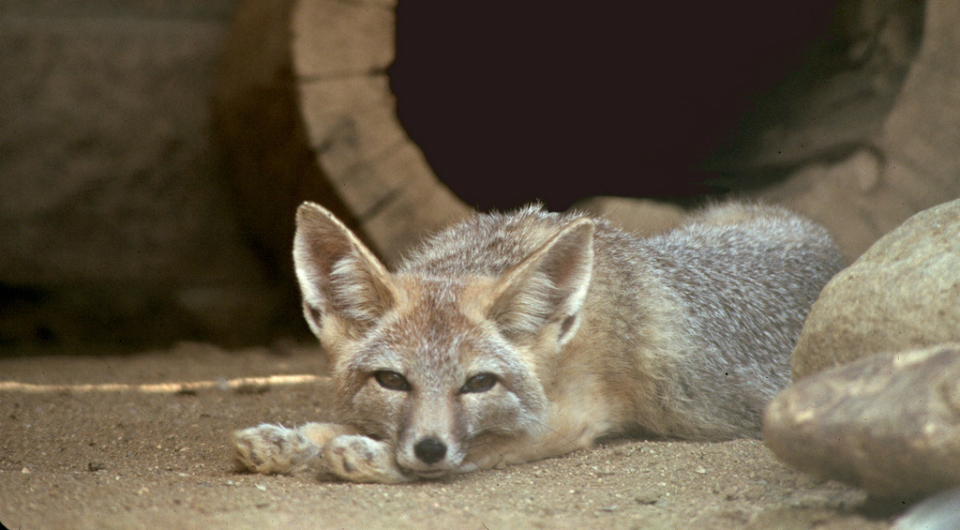Drought-stricken regions like California and other Western states may be in the midst of a wet winter, but unfortunately the precipitation isn’t a cure-all for water woes. Human activities, and their water-wasting habits, are taking a major toll on the ecosystems of animals large and small as rivers, wetlands, and aquatic systems dry up. Animal habitats are shrinking as our populations grow and cities urbanize—making it essential that we remain conscious of ripple effects our behaviors can create.
Here are a few creatures we can all save water for, as well as helpful suggestions to do your part. To learn more about how your can save water for wildlife visit www.DontBeADrip.org, a site produced by the Center for Biological Diversity, with support from Levi Strauss & Co.
- Fish out of water
Coho salmon, along with other Washington state fish including the pygmy whitefish, sockeye salmon, bull trout, steelhead trout, and Chinook salmon, are endangered due to a variety of issues caused by human activity. Some of the main reasons for the salmon population decline are dams, habitat loss/destruction, and global warming. Salmon need cold, clean, fast flowing water to reproduce. Sadly, rivers are failing to satisfy the salmon’s particular needs as we divert water for human use. By saving water, we help set aside more water for the salmon’s annual upriver run.
Do your part: High efficiency toilets use less than a quarter of the amount of water per flush than older toilets, saving the average family nearly 13,000 gallons a year. Don’t flush away the future of Coho salmon that need healthy, robust rivers for their annual epic journey upstream to spawn.
- Bugging out
A native of Nevada, the Salt Creek tiger beetle received its name due to its hunting strategy: lunging like a tiger. Though tiny, the tiger beetle is a fierce predator in the insect community. Due to a huge decline in population, this beetle has become one of the most rare insects in North America and is listed as endangered. The tiger beetles live in saline mudflats and wetlands, but their habitat has been seriously reduced due to urbanization. The saline wetlands are also dependent upon groundwater, but human use of this water can reduce salinity levels of the wetlands or even cause them to dry up.
Do your part: Laundry is responsible for as much as 40 percent of a household’s water use, which is particularly wasteful if you’re cleaning clothes that aren’t really dirty. Re-wear your jeans 10 times to help save the dwindling habitat of endangered wetland species like the Salt Creek tiger beetle.
- Clipped wings
The endangered whooping crane is a rare and stately bird, claiming the title of tallest bird in North America. The whooping crane has been struggling to survive since the 1940s, when its population dwindled to a mere 20 birds. Conservation efforts have boosted its numbers back up to about 600 today, but oil spills and shrinking wetlands threaten their home in Texas.
Do your part: Every extra minute in the shower can cost up to 5 gallons, so standing under the spray for just 10 more minutes means 50 gallons down the drain. That’s a luxury that whooping cranes can’t afford.
- A bear of an issue
Animal conservationists are greatly concerned about grizzly bears. The majestic animal is facing a shrinking habitat in Washington State. These animals weigh hundreds of pounds and require large areas of land without human disturbance. Grizzly bears hibernate through long winters, but to keep warm they need to fatten up. Without prey and vegetation, grizzly bears can’t survive until spring. Bears need the wildlife supported by local rivers to support their voracious appetites, so each gallon you save helps an entire ecosystem.
Do your part: Fixing leaky pipes are one of the fastest ways to take a bite out of water waste. An average household’s leaks can drip away more than 10,000 gallons of water a year. That water comes from rivers where grizzly bears seek shelter and food.
- Outfoxing the problem
The San Joaquin kit fox – a California native – lives on the west side of the San Joaquin Valley, but over the years its habitat has dwindled. In fact, by 1979, only about 6.7 percent of the San Joaquin Valley’s original land remained untilled and undeveloped, the rest of the area claimed by farmers and developers. Therefore, foxes are living off a smaller area of land, making prey all the more valuable. Because of the drought, less rain means fewer plants and fewer rodents, which is what the kit fox’s prey on, alluding to the drought’s large impact on sensitivity of local ecosystems.
Do your part: It takes about 100 times more water to produce a pound of beef than a pound of vegetable protein. The average American diet is drowning in water waste, which threatens the survival of countless species, such as the San Joaquin kit fox that’s particularly sensitive to drought during its breeding cycles.
- Before they croak
Arroyo toads, found in California, rely on small pools of water to breed. Arroyo toads get their name from the arroyos where they breed, creeks and riverbeds that seasonally fill based on rainfall, but human activities that influence the amount and timing of arroyo flooding can reduce or eliminate the toad’s breeding habitat.
Do your part: As much as 50 percent of the water used outdoors is wasted from inefficient and unnecessary watering. Choosing water-saving landscaping and watering less can keep more water in rivers and streams for arroyo toads and other amphibians that are an important part of healthy freshwater ecosystems.
To learn more about the states hogging the most water and ways to cut down water usage, visit http://www.DontBeADrip.org.
Feature photo credit: USFWS Endangered Species via Flickr CC







